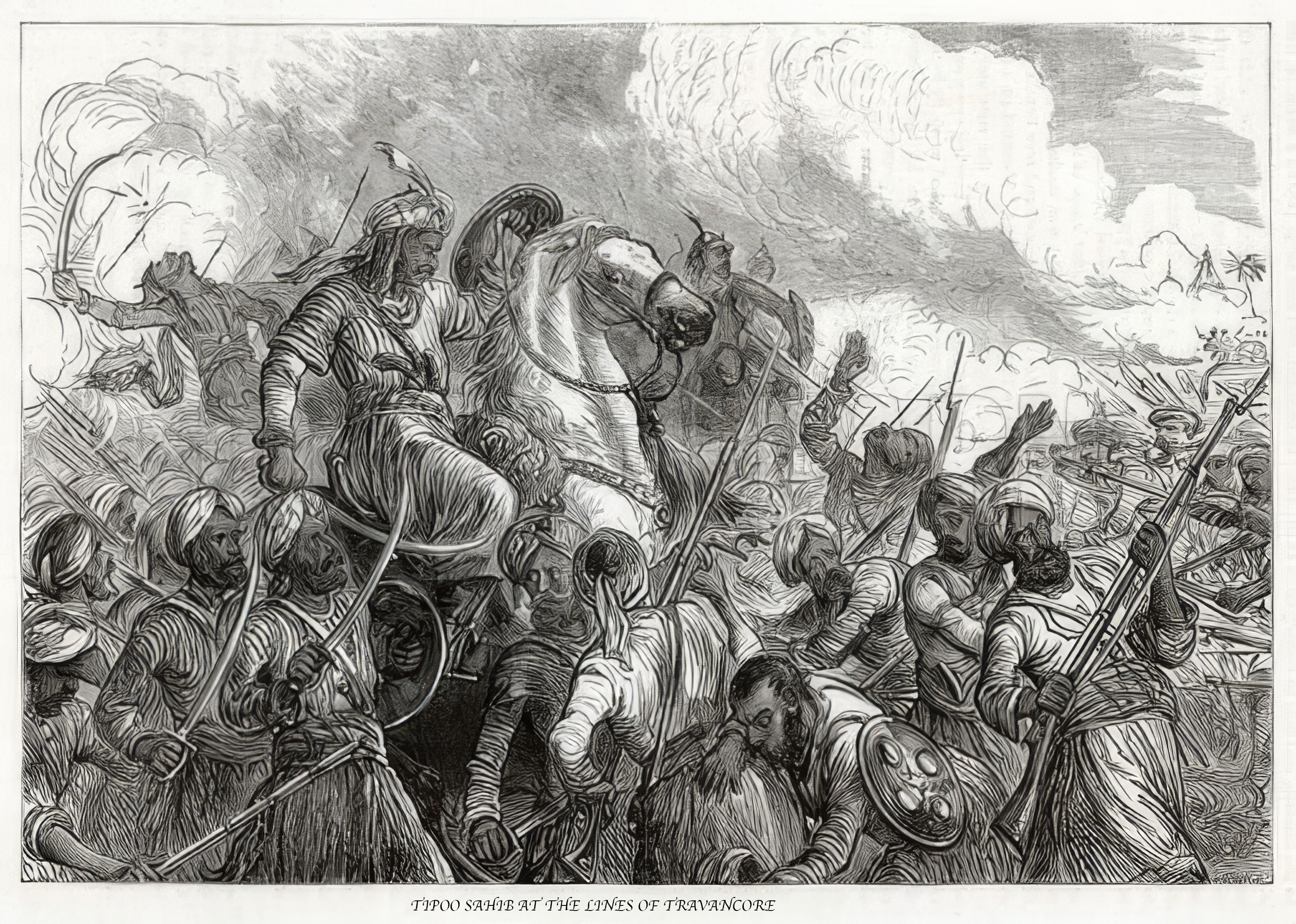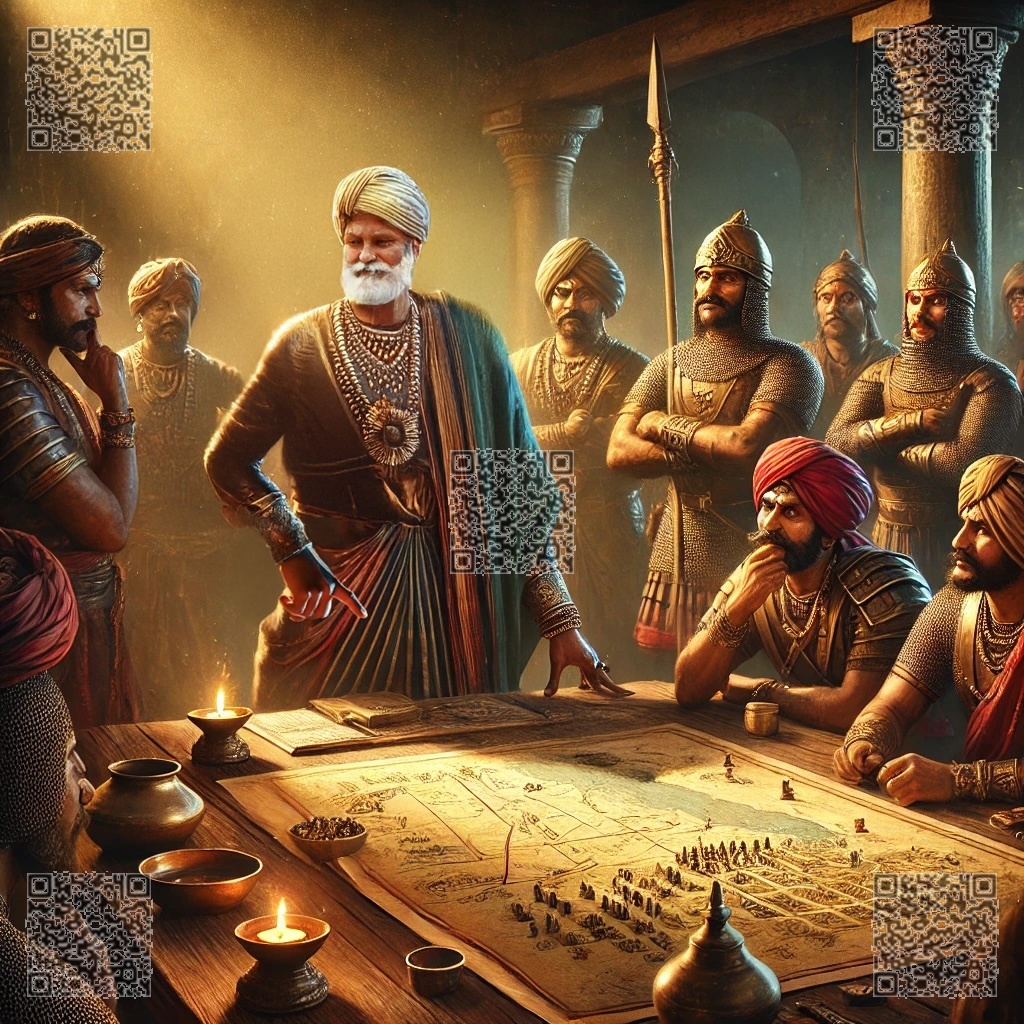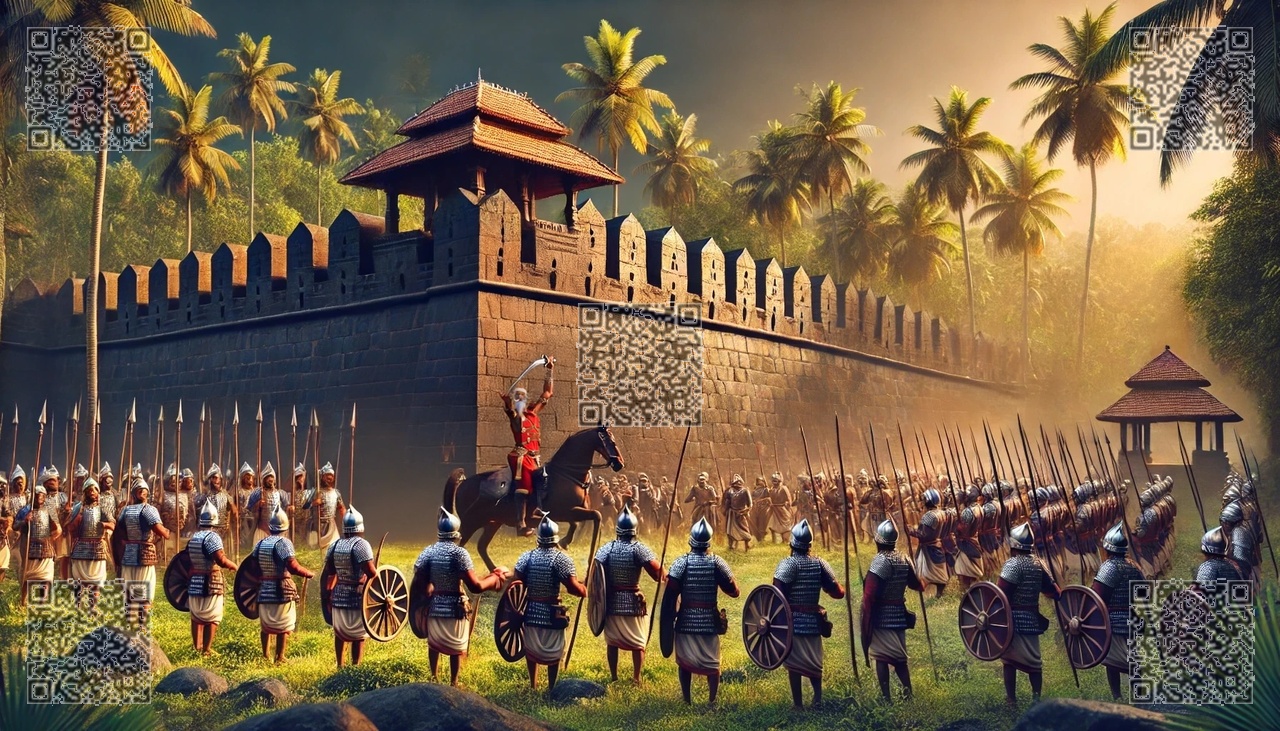Alummoottil Channar, a trusted commander in the service of the King of Travancore, stood resolute as Tipu Sultan’s forces approached the formidable lines of the Nedumkotta fortifications. These defenses, constructed under the directive of Marthanda Varma decades earlier, were designed as a tactical bulwark to protect Travancore from northern incursions. The fortifications utilized natural terrain features, reinforced with trenches, bastions, and strategic choke points. The terrain of the battlefield offered natural defensive advantages, including marshlands and dense forests.

Initial Preparations
Anticipating Tipu Sultan’s invasion, Alummoottil Channar led his engineers in reinforcing critical segments of the Nedumkotta. Earthworks were heightened, and bamboo stockades were interwoven to augment their strength. Key sections were fortified with concealed pits and caltrops to slow cavalry advancements.

Supply chains were carefully managed, with provisions and ammunition stored in concealed depots behind the lines. A system of messengers ensured real-time communication across different defensive sectors.
Deployment of Forces

The defending force comprised:
- Infantry: Light and heavy units armed with muskets, spears, and shields.
- Artillery: Cannon units strategically placed on elevated bastions, providing overlapping fields of fire.
- Skirmishers: Agile units deployed to harass enemy flanks and disrupt their formations.
- Auxiliary Units: Local militia trained for guerrilla warfare.
Channar’s strategy focused on maximizing the fortifications’ defensive potential while exploiting the environment to disrupt Tipu’s superior numerical advantage.
The First Assault
Tipu Sultan’s initial attack was a frontal assault intended to breach the Nedumkotta. Utilizing his renowned rocket brigades and heavy infantry, Tipu sought to overwhelm the defenses through sheer force. However, Channar’s pre-emptive measures proved decisive.

- Artillery Superiority: The strategically placed cannons delivered devastating enfilade fire, targeting concentrated enemy troops in narrow passages.
- Counter-Rocket Measures: Anticipating Tipu’s use of rockets, Channar deployed counter-measures, including water-filled trenches and angled barriers, which minimized the rockets’ impact.
- Skirmisher Ambushes: Hidden in the forests flanking the main defenses, skirmishers launched sudden hit-and-run attacks, creating confusion in the enemy ranks.
The Turning Point
Recognizing that a prolonged defense might wear down his resources, Channar executed a calculated counter-offensive. A carefully planned night raid targeted Tipu’s forward camps, utilizing guerrilla tactics.

- Deception: Diversionary attacks on the enemy’s flanks misled Tipu’s commanders into redistributing forces, weakening their primary assault line.
- Precision Strikes: Small, highly mobile units infiltrated the camps, destroying supply caches and artillery positions.
- Psychological Warfare: The use of signal fires and coordinated drumbeats created the illusion of a much larger attacking force, further demoralizing Tipu’s troops.
Final Phase
With Tipu’s forces disoriented and supplies disrupted, Channar ordered a phased withdrawal to secondary defensive lines, luring the remaining attackers into prepared kill zones. The marshy terrain compounded the Sultan’s difficulties, rendering his cavalry ineffective and exposing his infantry to sustained artillery bombardments.

Aftermath
By dawn, Tipu Sultan’s army, battered and demoralized, began a hasty retreat. Alummoottil Channar’s combination of meticulous preparation, strategic use of terrain, and innovative battlefield tactics had neutralized the invading force’s numerical superiority. The victory solidified Travancore’s reputation as an impenetrable stronghold in the southern subcontinent.
This triumph at Nedumkotta demonstrated the effectiveness of strategic fortifications combined with adaptive warfare, setting a precedent for defensive military strategy in the region.



